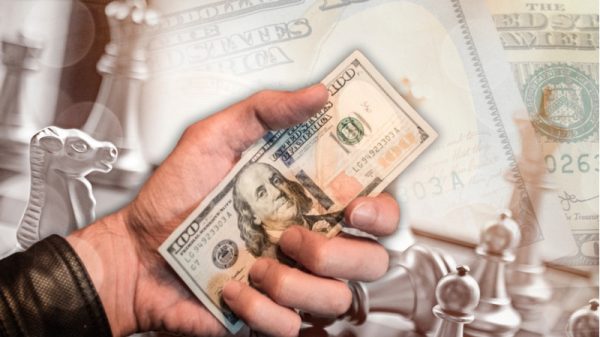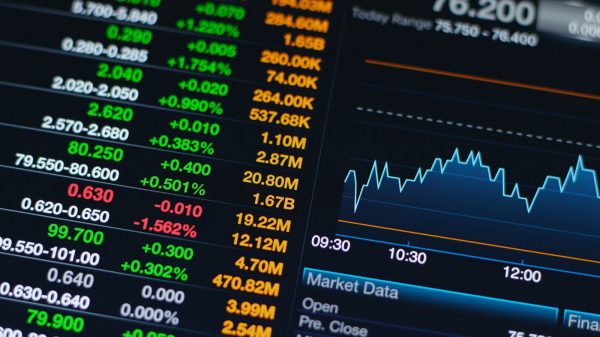Let’s look at a couple of examples:
Out Of The Money Call Option
Suppose a trader owns a 140 IBM Call Dec 20 call option allowing them to buy IBM stock at $140/share anytime between now and Dec 2020.
This call is said to be out of the money if the stock is less than $140, at $134 say.
There would be no point exercising this option, and buying the stock at $140, as it is available on the market for $134.
Out Of The Money Put Option
Likewise the owner of a 130 IBM Put Dec 20, allowing them to sell IBM stock for $130 anytime between now and Dec 2020, would not exercise this option as they could get a better price, $134, in the open market.
Hence the put is out of the money too.
Intrinsic Value: OTM Options
Out of the money options have no intrinsic value (unlike in ITM Options).
A call’s intrinsic value is defined as the discount to the stock price enjoyed by the owner of these options. As, by definition, there is no such discount (out-of-the money calls’ strike price is higher than the stock price) there is no intrinsic value.
Similarly the intrinsic value of a put, any premium of exercise price over the stock price, is zero too.
(Intrinsic value cannot be negative).
Extrinsic Value Of Out-Of-The-Money Options
Extrinsic value is defined as the option price less intrinsic value. As an OTM option has no intrinsic value (see above) all its value is extrinsic.
Options beginners struggle with this. Why, they ask, does an option that is, say, $6 out of the money (such as the 140 Dec 20 call above) have any value if a buyer could just buy the stock for a lower price. Wouldn’t the fair value of an OTM option be zero?
Extrinsic Value Example
Well, again looking at above call example, what the owner of the option is buying is the chance that it will move to be in the money (ie above $140) sometime between now and Dec 2020.
Suppose the stock price rose to $150 at expiry (for simplicity). The option holder would profit by $10 – they could exercise their $140 option and sell at $150. Indeed their upside is unlimited – the stock could be even higher.
Their downside is zero (excluding the cost of the option) however. No loss would be made If the underlying stayed below $140 as there is no obligation to exercise the option.
Optionality & Option Valuation
This ability to enjoy unlimited upside but no downside has a value – the call’s so called ‘optionality’. This value is what powers an OTM option’s price.
But how to quantify this value? How would we price the 140 Call, with the stock at $134? That’s for the market to price. But in general its value is mainly determined by:
The amount it is out of the money: you’d pay less for a 150 call, $16 out of the money, than the closer to the money $140 call for example.How volatile the stock is. The IBM share price is likely to be much steadier than, say, a start-up. Hence it is much less likely to jump up to the $140 before Dec 2020. Therefore the IBM call option is likely to be worth less. The market’s view of a stock’s future volatility is called implied volatility.
How long to expiry. If there is a long time between now and the option expiration date then it is more likely to cross $140. Therefore, all other things being equal, it is more valuable than a shorter dated option.
(There more on how options work here)
Behavior Of OTM Options On Expiry
Following on from the last point above, the option has no extrinsic value if there is no time left to expiry as there is no optionality (the stock can never rise to be in the money).
Because it has no intrinsic value either (see above) OTM options expire worthless on expiry.
This makes sense. If the above option, for example, expires with the stock price below $140, the option holder will be able to buy stock at $140.
But they can buy it for less, $134, on the market and so the option has no value to him/her.
An option will expire worthless if it is out of the money as (per the above examples). The market will provide a better price for both buying (call) and selling (put options).
Conclusion
Out of the money call/put options are those that are above/below the strike price and have no intrinsic value.
They do have extrinsic value – caused by a holder potentially making money if the stock moves.
The market’s view of the stock’s future volatility (i.e. its implied volatility), how far the strike price is from the stock price and time to expiry are the main factors that influence an option’s market price.
If an option expires out of the money it is worthless.
About the Author: Chris Young has a mathematics degree and 18 years finance experience. Chris is British by background but has worked in the US and lately in Australia. His interest in options was first aroused by the ‘Trading Options’ section of the Financial Times (of London). He decided to bring this knowledge to a wider audience and founded Epsilon Options in 2012.



























